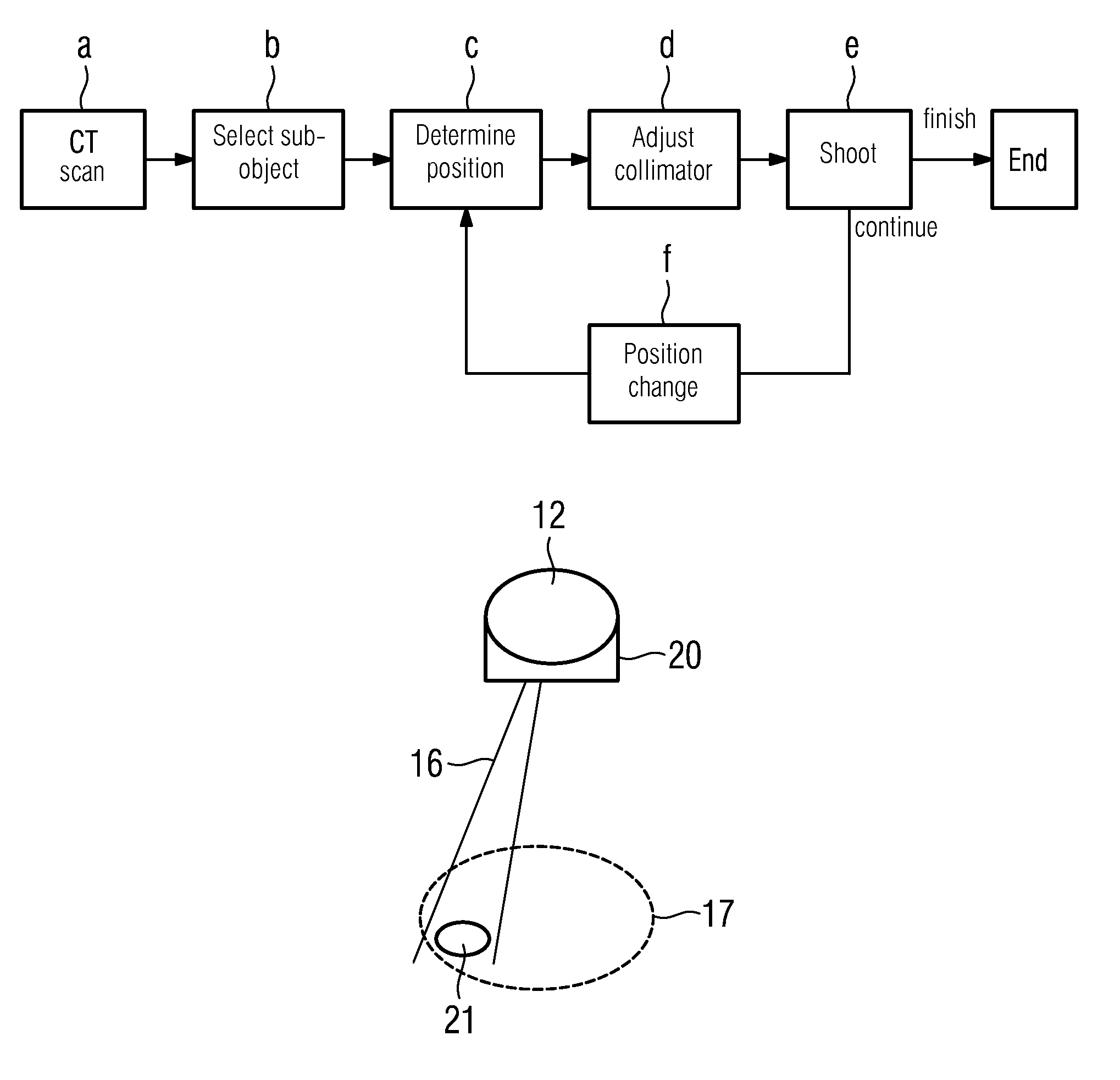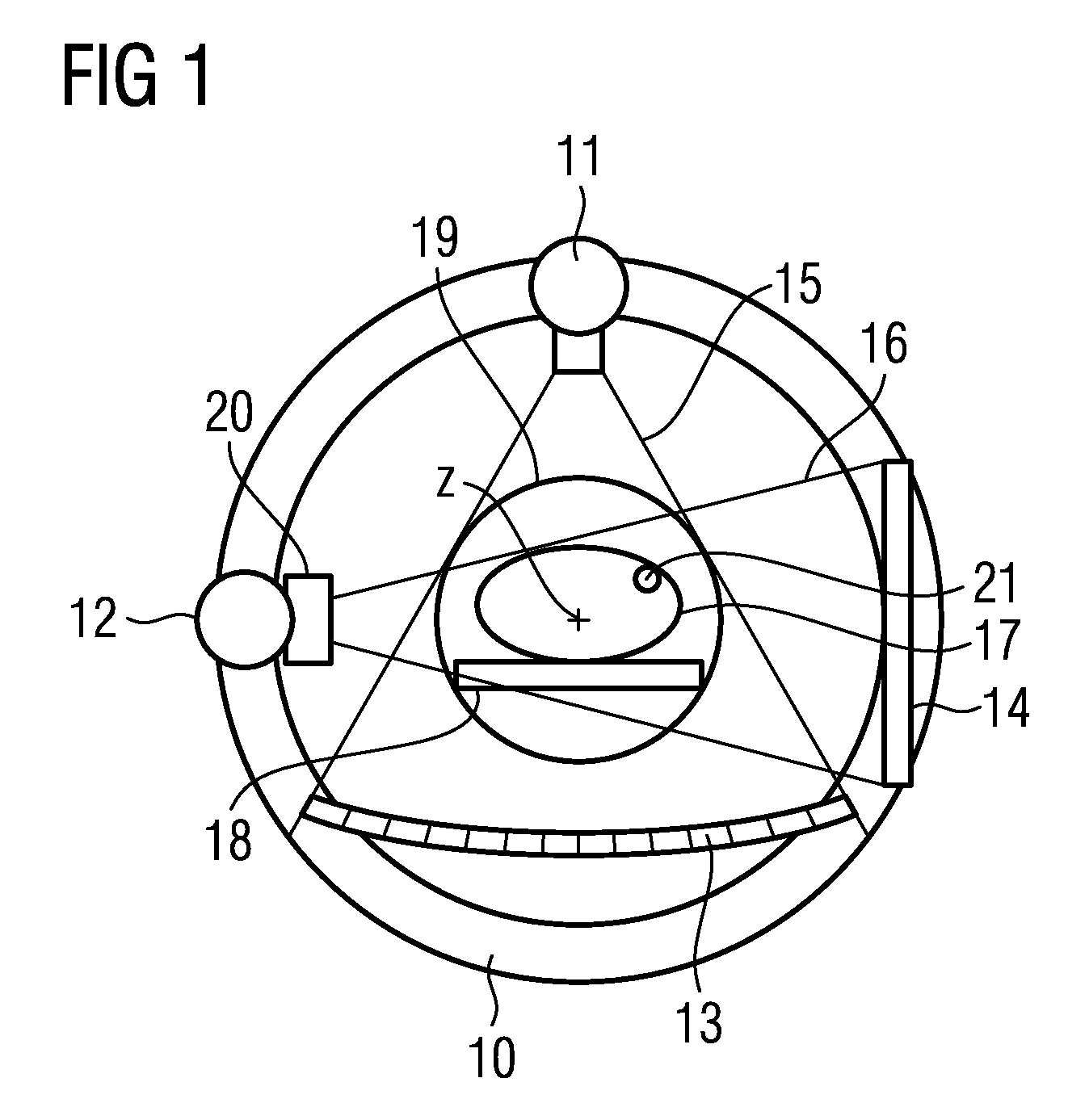Method for collimating to an off-center examination sub-object
a sub-object and collimation technology, applied in the field of collimation to an off-center examination sub-object, can solve the problems of terns of resolution and scan field disadvantages, and achieve the effect of precise collimation and loss of important information
- Summary
- Abstract
- Description
- Claims
- Application Information
AI Technical Summary
Benefits of technology
Problems solved by technology
Method used
Image
Examples
Embodiment Construction
[0023]A known X-ray diagnostic apparatus shown in FIG. 1 contains, in a gantry 10, a computed tomography (CT) imaging system with a first X-ray source 11 and a CT X-ray detector 13, and an angiographic imaging system with a second X-ray source 12 and a second flat panel X-ray detector 14. In the case of the CT imaging system, the first X-ray source 11 emits a fan beam 19 and the CT X-ray detector 13 is curved and composed of a number of individual detectors (e.g. 512). To scan an examination subject 17 disposed on a patient table 18, the CT imaging system rotates around the examination subject 17 through 360° by means of the gantry 10; the data set acquired can be reconstructed into a 3D volume image.
[0024]The angiographic imaging system has a second X-ray source 12 and a flat panel X-ray detector 14; the second X-ray source emits a conical X-ray beam 16 onto the flat panel X-ray detector 14. Between the first perpendicular bisector from the first X-ray source 11 onto the CT X-ray d...
PUM
 Login to View More
Login to View More Abstract
Description
Claims
Application Information
 Login to View More
Login to View More - R&D
- Intellectual Property
- Life Sciences
- Materials
- Tech Scout
- Unparalleled Data Quality
- Higher Quality Content
- 60% Fewer Hallucinations
Browse by: Latest US Patents, China's latest patents, Technical Efficacy Thesaurus, Application Domain, Technology Topic, Popular Technical Reports.
© 2025 PatSnap. All rights reserved.Legal|Privacy policy|Modern Slavery Act Transparency Statement|Sitemap|About US| Contact US: help@patsnap.com



